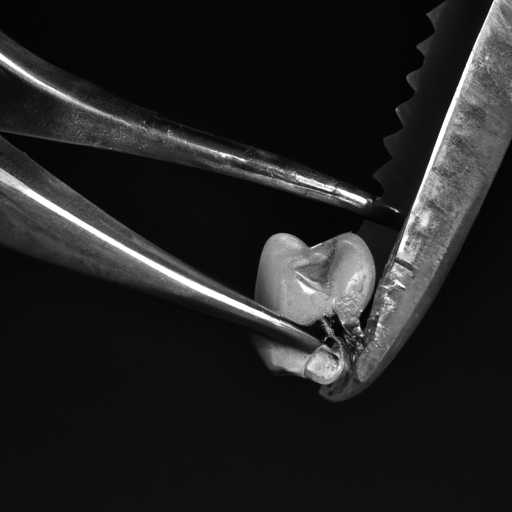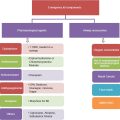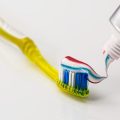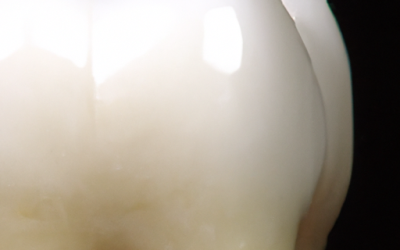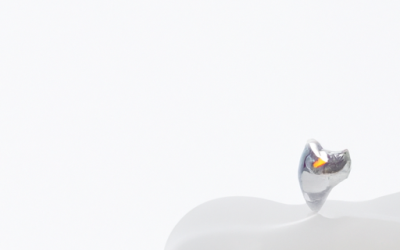You never thought it would happen to you, but here you are, faced with excruciating pain from your impacted or infected wisdom tooth. The throbbing agony has become unbearable, and you know it’s time to take action. Emergency wisdom tooth extraction is your ticket to sweet relief, saving you from any potential complications that could arise if left untreated. So buckle up, because we’re about to explore the world of emergency dental procedures and how they can be your saving grace in times of dental distress.
Impacted Wisdom Teeth
Impacted wisdom teeth occur when there isn’t enough space for them to properly emerge or develop in the mouth. This can lead to a variety of problems and necessitate emergency extraction. The most common cause of impacted wisdom teeth is the lack of space in the jaw. As a result, the teeth may be unable to fully erupt or grow at an angle, causing them to become impacted.
Symptoms of Impacted Wisdom Teeth
There are several symptoms that can indicate the presence of impacted wisdom teeth. These include pain or tenderness around the back of the mouth, swelling of the gums, difficulty opening the mouth, bad breath, and an unpleasant taste. If you’re experiencing any of these symptoms, it’s important to see a dentist right away.
Complications of Impacted Wisdom Teeth
Leaving impacted wisdom teeth untreated can lead to a range of complications. The pressure from the impacted teeth can cause damage to other teeth, leading to tooth decay, gum disease, or even tooth loss. In some cases, impacted wisdom teeth can also cause bacterial infections, cyst development, or damage to the surrounding bones. It’s crucial to address the issue promptly to avoid these complications.
Causes of Wisdom Tooth Infections
Wisdom tooth infections occur when bacteria enter the gums surrounding the impacted or partially erupted wisdom teeth. This can happen due to poor oral hygiene, where bacteria accumulate and cause infection. Additionally, food particles can get trapped between the gum and the partially erupted tooth, providing a breeding ground for bacteria.
Signs and Symptoms of Wisdom Tooth Infections
The signs of a wisdom tooth infection include severe pain or throbbing in the affected area, swelling of the jaw or face, redness or inflammation of the gums, and a foul taste or odor in the mouth. Some individuals may also experience difficulty swallowing or opening their mouth fully. If you suspect a wisdom tooth infection, immediate dental attention is necessary.
Risks and Complications of Untreated Infections
Untreated wisdom tooth infections can have serious consequences. The infection can spread to other parts of the mouth or even the bloodstream, leading to a condition called sepsis. In some cases, it can also result in the formation of an abscess, a pocket of pus that can damage the surrounding tissues. Without timely treatment, the infection can cause further pain, tooth damage, and systemic health issues.
Severe and Persistent Pain
One of the main signs that you may need to seek emergency wisdom tooth extraction is severe and persistent pain. This pain can be continuous or intermittent, and it may worsen with chewing or biting. If over-the-counter pain relievers aren’t providing relief, it’s important to consult a dentist as soon as possible.
Swelling and Inflammation
If you notice swelling or inflammation around the area of the impacted or infected wisdom tooth, it could indicate the need for emergency extraction. Swelling can occur in the gums, jawline, or even the face. This swelling is often accompanied by pain or tenderness and can make it difficult to eat, speak, or properly open the mouth.
Difficulty Opening the Mouth
Another sign that emergency wisdom tooth extraction may be necessary is difficulty opening the mouth fully or experiencing limited jaw movement. Impacted or infected wisdom teeth can cause stiffness in the jaw joint, making it challenging to speak or chew properly. If you’re experiencing restricted jaw movement, it’s important to consult a dentist for evaluation and potential extraction.
Unpleasant Taste or Bad Breath
If you notice an unpleasant taste or persistent bad breath, it could indicate an infected wisdom tooth. The accumulation of bacteria and pus can lead to an unpleasant taste in your mouth, even after rigorous oral hygiene practices. This symptom should not be ignored, as it may indicate an underlying infection that requires immediate attention.
Gum Abscess or Pus Drainage
The presence of a gum abscess or pus drainage around the wisdom tooth is a clear indication that emergency extraction is needed. A gum abscess is a painful pocket of pus that forms in the gums near an infected tooth. If you notice any discharge of pus or swelling filled with fluid, it’s crucial to seek immediate dental care.
Finding an Emergency Dentist
When faced with the need for emergency wisdom tooth extraction, it’s important to find a dentist who can address your situation promptly. Start by calling your regular dentist and explaining the urgency of your situation. In some cases, they may be able to provide emergency care or recommend a trusted dentist who specializes in emergencies.
Medical History and Precautions
Before undergoing emergency extraction, your dentist will review your medical history to ensure that you’re a suitable candidate for the procedure. It’s important to disclose any medical conditions, allergies, or medications you are taking. This information will help the dentist assess the potential risks and determine the best course of action.
Understanding the Procedure
Understanding the wisdom tooth extraction procedure can alleviate any anxiety or concerns you may have. The dentist will begin by numbing the area with local anesthesia to ensure that you’re comfortable during the procedure. In some cases, sedation may also be used to help you relax. The dentist will then carefully remove the impacted or infected tooth following surgical extraction techniques.
Pain Management Options
During an emergency extraction, it’s crucial to manage pain effectively. Your dentist will discuss various pain management options with you, such as over-the-counter pain relievers, prescription medications, or local anesthesia during the procedure. It’s important to follow the dentist’s instructions for pain management to ensure a comfortable recovery.
Pre-op Instructions
To prepare for emergency wisdom tooth extraction, your dentist will provide pre-operative instructions. These may include fasting before the procedure if sedation or general anesthesia is being used. It’s crucial to follow these instructions closely to ensure a successful and safe extraction.
Local Anesthesia and Sedation
Local anesthesia is typically used to numb the extraction site during the procedure. This ensures that you don’t feel any pain or discomfort. In some cases, sedation may also be used to help you relax or sleep during the extraction. The type and amount of anesthesia or sedation used will depend on your unique case and the dentist’s recommendation.
Surgical Extraction Techniques
Impacted or infected wisdom teeth often require a surgical extraction. The dentist will carefully create an incision in the gum tissue to access the tooth and remove it. In some cases, the tooth may need to be sectioned into smaller pieces for easier extraction. The dentist will take great care to minimize trauma and ensure the best possible outcome.
View all our emergency dental services
Tooth Sectioning
Tooth sectioning is a technique used when a wisdom tooth is fully or partially impacted and cannot be extracted in one piece. The dentist will carefully divide the tooth into smaller sections to facilitate extraction. Each section of the tooth is then removed individually. While tooth sectioning may sound complex, it allows for a more controlled and efficient removal of impacted wisdom teeth.
Suturing the Extraction Site
After the wisdom tooth has been extracted, the dentist may place sutures to help the gums heal properly. The sutures help to close the wound and aid in the recovery process. The dentist will provide specific post-operative care instructions for proper healing and maintenance of the extraction site.
Post-Procedure Instructions
Following emergency wisdom tooth extraction, your dentist will provide detailed post-operative instructions. These instructions will include information on how to care for the extraction site, what activities and dietary restrictions to observe, and when to schedule follow-up appointments. It’s important to follow these instructions carefully to promote effective healing and minimize the risk of complications.
Medication Options
Depending on the extent of the extraction and your pain tolerance, your dentist may prescribe pain medications or recommend over-the-counter pain relievers. Nonsteroidal anti-inflammatory drugs (NSAIDs) are commonly used to manage pain and reduce inflammation after wisdom tooth extraction. It’s important to take medications as directed by your dentist and report any adverse reactions.
Home Remedies for Pain Relief
Alongside prescribed or over-the-counter pain medication, there are several home remedies that can help alleviate pain after emergency extraction. Applying a cold compress to the outside of the cheek near the extraction site can help reduce swelling and numb the area. Rinsing with warm saltwater can also provide relief by keeping the extraction site clean and promoting healing.
Proper Oral Hygiene
Maintaining proper oral hygiene is crucial after emergency wisdom tooth extraction to prevent infection and promote healing. You should continue to brush your teeth gently, avoiding the extraction site for the first 24 hours. Afterward, you can carefully clean the extraction site using a prescribed mouth rinse or saltwater solution. It’s important to follow your dentist’s instructions for oral hygiene to ensure a smooth recovery.
Dry Socket
One of the potential post-extraction complications is the development of a dry socket. A dry socket occurs when the blood clot that normally forms after extraction dislodges or dissolves prematurely. This can result in intense pain, an unpleasant taste, bad breath, and a visible empty socket. If you suspect you have a dry socket, it’s essential to contact your dentist for appropriate treatment.
Infection
Although uncommon, the extraction site can become infected after wisdom tooth removal. Signs of infection may include increased pain, swelling, redness, discharge of pus, or an elevated body temperature. If you experience any of these symptoms, it’s crucial to seek dental attention promptly to prevent the spread of infection.
Nerve Damage
In rare cases, the extraction of wisdom teeth can cause nerve damage, leading to numbness or tingling in the lips, tongue, or chin. The risk of nerve damage is higher when the wisdom teeth are impacted and close to the nerves. Your dentist will carefully assess the potential risks before the extraction and provide appropriate post-operative care instructions to minimize the chance of nerve damage.
Bleeding
It’s normal to experience some bleeding after wisdom tooth extraction. Your dentist will provide instructions on how to manage the bleeding, including biting down on a gauze pad to encourage clotting. If the bleeding becomes excessive or persistent, it’s important to contact your dentist for further guidance.
Immediate Post-Procedure Care
Immediate post-procedure care involves following your dentist’s instructions for minimizing bleeding, managing pain, and promoting healing. This may include applying ice packs, taking prescribed medications, and avoiding activities that can disrupt the extraction site. It’s crucial to carefully follow these instructions to ensure a successful recovery.
Activities and Diet Restrictions
After emergency wisdom tooth extraction, it’s important to avoid activities that can disrupt the healing process. This includes refraining from intense physical activity, smoking, drinking through a straw, and consuming hot or hard foods. It’s best to stick to a soft diet for the first few days to prevent irritation of the extraction site and promote healing.
Follow-Up Appointments
Follow-up appointments are an essential part of the recovery process after emergency extraction. Your dentist will schedule these appointments to monitor your healing progress, remove sutures if necessary, and address any concerns or complications that may arise. Attending these appointments is crucial for ensuring optimal healing and preventing any potential issues from escalating.
Regular Dental Checkups
To prevent wisdom tooth complications, it’s important to maintain regular dental checkups. Your dentist will closely monitor the development and position of your wisdom teeth through periodic evaluations and X-rays. Early detection of potential issues will allow for proactive management and prevent the need for emergency extraction.
Early Evaluation and X-rays
Early evaluation and X-rays play a pivotal role in identifying wisdom tooth complications before they become severe. X-rays can determine the position and alignment of the wisdom teeth, as well as identify any signs of impaction or infection. By detecting potential issues early on, your dentist can develop a treatment plan to prevent complications and alleviate pain.
Understanding the Position and Alignment
Understanding the position and alignment of your wisdom teeth is crucial for determining the need for extraction. Your dentist will assess whether your wisdom teeth are fully erupted, partially erupted, or impacted. Additionally, they will evaluate the relationship between your wisdom teeth and surrounding structures to determine if extraction is necessary to prevent future complications.
Proactive Extraction
In some cases, proactive wisdom tooth extraction may be recommended even before complications arise. This approach is often taken if the dentist predicts future problems due to the position or alignment of the wisdom teeth. By removing the wisdom teeth before they become impacted or infected, you can avoid the need for emergency extraction and potential complications.
Wisdom tooth extraction is often necessary to relieve pain and prevent further complications. Whether dealing with impacted or infected wisdom teeth, recognizing the need for emergency extraction is crucial. By understanding the causes, symptoms, and potential complications, you can be prepared to seek immediate dental care. Remember to follow your dentist’s instructions for pre-operative and post-operative care, as well as regular dental checkups to prevent future wisdom tooth complications. With proper care and prompt action, you can alleviate pain and maintain optimal oral health.

